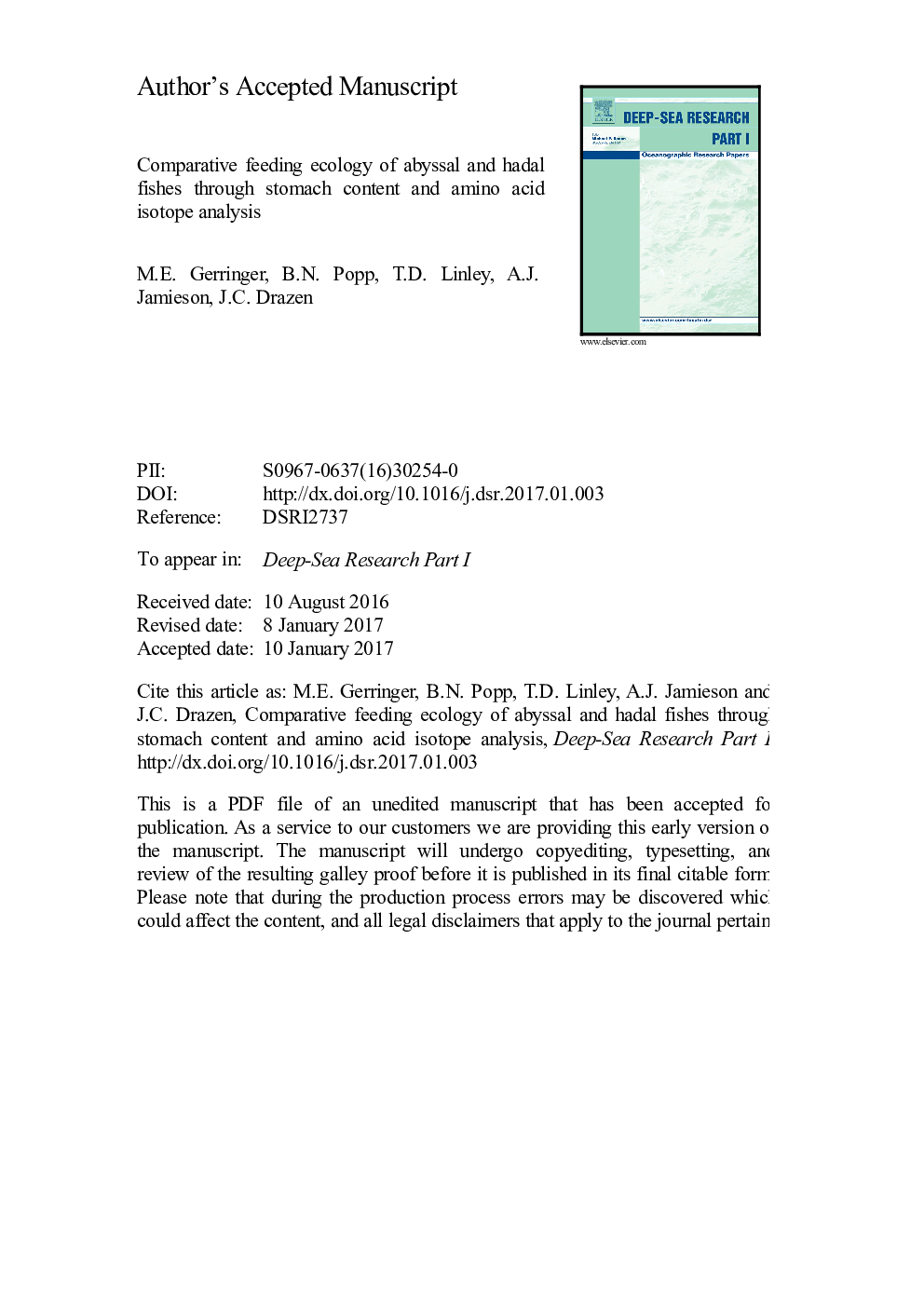| Article ID | Journal | Published Year | Pages | File Type |
|---|---|---|---|---|
| 5764629 | Deep Sea Research Part I: Oceanographic Research Papers | 2017 | 28 Pages |
Abstract
The snailfishes, family Liparidae (Scorpaeniformes), have found notable success in the hadal zone from ~6000â8200 m, comprising the dominant ichthyofauna in at least five trenches worldwide. Little is known about the biology of these deepest-living fishes, nor the factors that drive their success at hadal depths. Using recent collections from the Mariana Trench, Kermadec Trench, and neighboring abyssal plains, this study investigates the potential role of trophic ecology in structuring fish communities at the abyssal-hadal boundary. Stomach contents were analyzed from two species of hadal snailfishes, Notoliparis kermadecensis and a newly-discovered species from the Mariana Trench. Amphipods comprised the majority (Kermadec: 95.2%, Mariana: 97.4% index of relative importance) of stomach contents in both species. Decapod crustaceans, polychaetes (N. kermadecensis only), and remains of carrion (squid and fish) were minor dietary components. Diet analyses of abyssal species (families Macrouridae, Ophidiidae, Zoarcidae) collected from near the trenches and the literature are compared to those of the hadal liparids. Stomachs from abyssal fishes also contained amphipods, however macrourids had a higher trophic plasticity with a greater diversity of prey items, including larger proportions of carrion and fish remains; supporting previous findings. Suction-feeding predatory fishes like hadal liparids may find an advantage to descending into the trench - where amphipods are abundant. More generalist feeders and scavengers relying on carrion, such as macrourids, might not benefit from this nutritional advantage at hadal depths. Compound specific isotope analysis of amino acids was used to estimate trophic level of these species (5.3±0.2 Coryphaenoides armatus, 5.2±0.2 C. yaquinae, 4.6±0.2 Spectrunculus grandis, 4.2±0.2 N. kermadecensis, 4.4±0.2 Mariana snailfish). Source amino acid δ15N values were especially high in hadal liparids (8.0±0.3â° Kermadec, 6.7±0.2â° Mariana), suggesting a less surface-derived food source than seen in the scavenging abyssal macrourids, C. armatus (3.5±0.3â°) and C. yaquinae (2.2±0.3â°). These results are compared to bulk muscle tissue isotopic compositions. This study provides the first comprehensive examination of the feeding ecology of the ocean's deepest-living fishes and informs new understanding of trophic interactions and fish community structure in and near the hadal zone.
Related Topics
Physical Sciences and Engineering
Earth and Planetary Sciences
Geology
Authors
M.E. Gerringer, B.N. Popp, T.D. Linley, A.J. Jamieson, J.C. Drazen,
